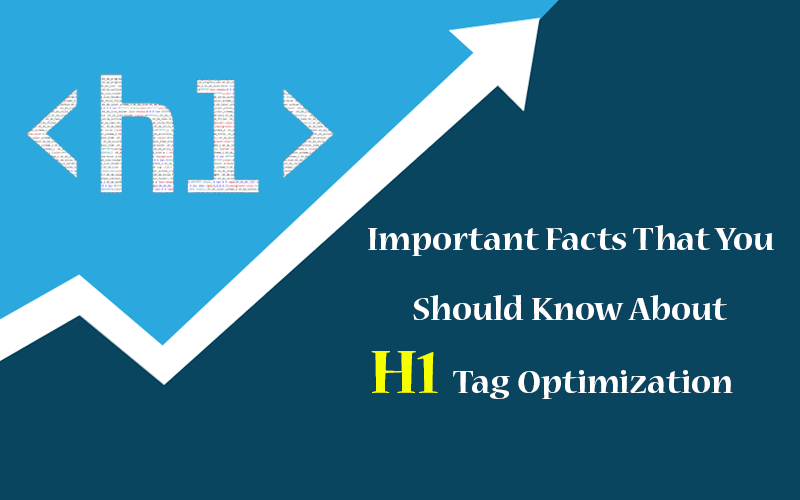Among many strategies involved in this today’s technology H1 tag has become one of the key parts of on-page optimization. It includes the title of the page which is illustrated at the top of the content. In case you have been scrutinizing the web to search key web page optimization techniques, one must have come across H1 tags and the immense need to optimize them.
Thereby performing H1 tags SEO could make your web pages more appealing and also ameliorate your search engine rankings. It is also vital that you follow the top techniques while optimizing the H1 tags. There are some quality techniques to optimize the H1 tag making your web pages SEO-friendly.
What is the H1 Tag?
We understand that the H1 tag is a part of HTML heading tags. The web pages are enumerated using HTML tags in the web browser. Numerous HTML tags are primarily combined to display several web page elements. Mostly the Heading tags are the HTML tags that are utilized to display headings on the web page.
It primarily means that words written within the heading tag will be highlighted separately, thereby making your website content simple to understand. The H1 tag optimization generally leads the family of heading tags and content written within the H1 tag has a huge size.
Each heading tag after it has a comparatively smaller size and is utilized to display different kinds of headings on the web page. The H1 tag comprises the main title of the web page. Each web page must have only one H1 tag and multiple H2, H3, tags.
More similarly, the h2 and h3 tags are utilized to display headings and subheadings on the web page. As soon as you begin to move down the hierarchy, the size of the text gradually starts to decrease. It primarily means that the h3 tag has a very smaller size than the h2 tag.
The Key Importance of H1 Tag Optimization
By adding heading tags, you could divide your web page content into proper segments. Eventually, it becomes simpler for both the search engine as well as the user to navigate through your web page. Even the content on your web pages becomes simpler to understand and the overall page looks more appealing as well.
Primarily the search engine crawler uses several key signals to properly understand the content on your web page and index them accordingly. The heading tags are one such key element that assists the search engine understands the overall context of your web page.
It primarily means that by adding your target keyword into the heading tags, you could make your web pages relevant to a specific search engine query. This is the reason why it’s always suggested to add dedicated heading tags to each web page.
How H1 Tag is Different from Other Heading Tags?
We know that the h1 tag is different from the rest of the heading tags. While other heading tags are utilized to illustrate headings and subheadings to the web page, the H1 tag is utilized to display the main title of the web page.
H1 Tag Can or Cannot Be Similar to Your Title Tag
Primarily you can set the H1 tag the same as your H1 tag. Even though many users claim it, having the same title and H1 tag is not an SEO mistake and does not demerit your website in any way.
It is crucial to make your title tag a bit more descriptive, particularly if you have kept the H1 tag exclusively facile. The title is the first kind of thing a user notices on the SERP. To make things vivid and assist the user to understand what your page is all about, one must keep the title as informative and as attractive appealing as possible.
You Must Add Keywords to the H1 Tag
The search engine eventually reads the H1 tag to understand the overall context of your web page. Thereby, it is good to infuse your target keyword into the H1 tag. The same approach is suggested for the title tag as well. Both of them assist the crawler in wholly understanding what your page is all about.
Keep the H1 Tag Concise and Informative
It is said that the long headings damage the content readability. The H1 tag on your website should be concise but descriptive. Though there isn’t any particular word length to write the H1 tag, you must guarantee that the length does not exceed 60 characters.
Always Keep the H1 Tag Visible to the User
The website themes generally tend to automatically hide the H1 tags from users. The key purpose of the heading tag is to wholly give the user a hint about the web page; it is not a top SEO practice to hide it from the user. You also make sure that the H1 tag on each web page of your website is generally visible to the user all the time.
Good to Maintain a Proper Hierarchy of Heading Tags
One must maintain a hierarchical order not only assists the search engine to properly understand the context in a good way, but also makes your web pages more engaging, captivating, and user-friendly. This kind of content actively encourages the user to spend more time on the website and continue reading the content.



